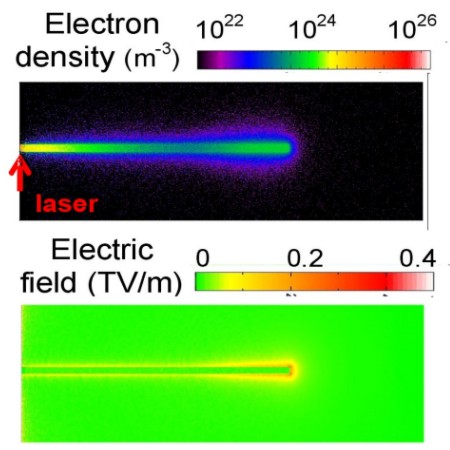 |
|
Electron transport in dense plasma
The study of fast electron generation and transport in intense laser interactions with dense plasma is of fundamental importance for the fast ignition approach to inertial fusion and for the optimisation of high power laser-driven ion and X-ray sources. This has been the subject of intensive investigation in recent years.
An EPSRC-funded three-year research project aims to investigate the physics of energetic electron generation and transport in hot dense plasma using a suite of new and established diagnostic techniques.
Project title: Key physics for inertial confinement fusion diagnosed by ion emission
Start date: October 2007; Award: £663,503
Personnel:
Dr Paul McKenna (Principal Investigator)
Dr David Neely (STFC and Visiting Professor at Strathclyde)
Professor Roger Evans (Imperial College London)
Dr Xiaohui Yuan (Research Assistant)
Mark Quinn (PhD Project student)
David Carroll (PhD student)
Publications:
P. McKenna et al., Physical Review Letters 98, 145001 (2007) PDF
A collaboration consisting of the University of Strathclyde, the CLF, Lund University and Queen’s University Belfast present an experimental investigation of relativistic electron transport in ultraintense laser-irradiated foils, diagnosed via spatially resolved measurements of multi-MeV ion emission. By measuring ion emission from the edges of thin target foils the group report quantitative measurements of the 2D spatial distribution of electric field formation due to lateral electron transport in the foil. The experimental measurements and simulations using a particle-in-cell (PIC) model reveal enhanced electron densities and electric fields at solid-vacuum boundaries, and shed light on the dynamics of the expansion of the relativistic electron cloud. The figure (below) shows an example of the simulated electron density distribution and resulting electric field formation in a laser-irradiated target foil.

For further information on this research project please contact Dr Paul McKenna.
|
Part of the
Scottish Universities
Physics Alliance (SUPA) and the
Department
of Physics, |
